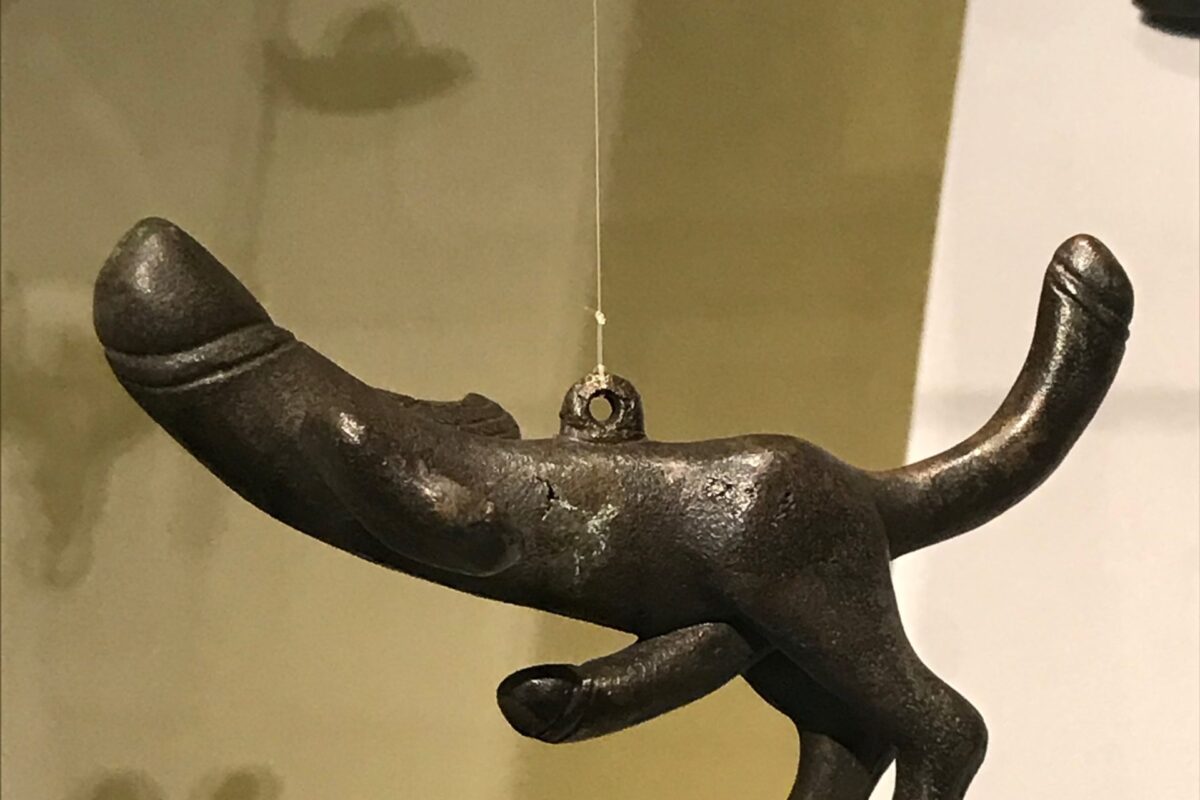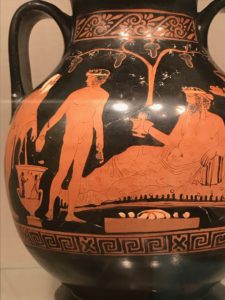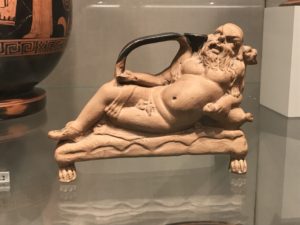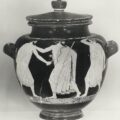Penises in art are a bigger theme than you might think. After all, what is the number one question people ask in the Greek and Roman collection of any museum? There is no competition: why the penises in Classical art are smaller than real-life average adult penises. And the second is: whether Christians really broke off the penises that are missing from so many male nude statues.
Size
The answer to the first question is actually pretty clear. The Greeks saw penises as symbolic of masculinity. And in their view, the most important masculine virtue was self-control. To their eyes, a small penis looked self-controlled, whereas a large or erect penis showed lack of self-control. There are speeches in ancient comedy that make this crystal clear, but it’s clear in the artworks as well. Heroes like Hercules have tiny penises, while comic and shameful half-human creatures like Satyrs and Silenus have large, often erect penises.
I’ll illustrate some examples which are in the same case in the Metropolitan Museum. In one, an attractive adolescent boy serves the seated god Bacchus wine. He has the
penis that corresponds to beauty and youth in Greek art: the penis of a child. Not far from him is a little oil flask shaped like Silenus, the eldest of Bacchus’ followers. He is balding and ugly and has a grotesque, drunken expression. And he has a large, messy-looking penis.
Now Greek men saw each other naked far more than men in most cultures, because at least the wealthy spent all day working out—nude!—in the “gymnasium.” In fact, ‘gymnos’ means ‘naked,’ so the gymnasium is the naked place. So if their eyes were open, they would have noticed that penises, like other body parts, vary a lot in size, and this variation does not correspond to their owners’ ethical characters. But people often see their preconceptions rather than the evidence in front of them. Why should the Greeks have been any different?
Damage
The answer to the second question is less clear. Most of the ancient statuary we have is marble (since bronze statues were mostly melted down in the Middle Ages) and damaged. The penis, like the nose, is one of the most fragile parts of a marble statue. So they could just have been damaged over time.
On the other hand, early Christians did deface statues of the gods, especially sexy statues, so they may have broken off some penises. On the whole, I think Christians generally defaced statues with chisels, so chisel marks could be a sign. I think for instance that the nose of the bust of the Emperor Hadrian’s boy-toy Antinous at the Met may have been chiseled off by Christians. Hadrian declared Antinous a god when he died, and Christians were particularly angry at the idea of the boy-toy god. I do not believe that Christians broke off any of the missing penises at the Met, though there is no possible certain proof either way.
Beyond Greece
There are in fact lots of other fun facts about penises in art. The Romans for instance thought of erect penises (or at least sculptures of erect penises) as good-luck charms, so they hung little multi-penis wind-chimes (as it were) in their houses, to ward off the evil eye, Our featured image is an example. It is a penis with a penis, and a penis for a tail too. And penises also appear in the
art of other periods, as in the vastly exaggerated codpieces that men wore in the Renaissance, to proclaim their towering masculine powers.
To find out more, check out our video on penises in art, from Greece to the 19th century, and watch a live Zoom tour about the “Unhung Heroes of the Metropolitan Museum” on Sunday September 12.













